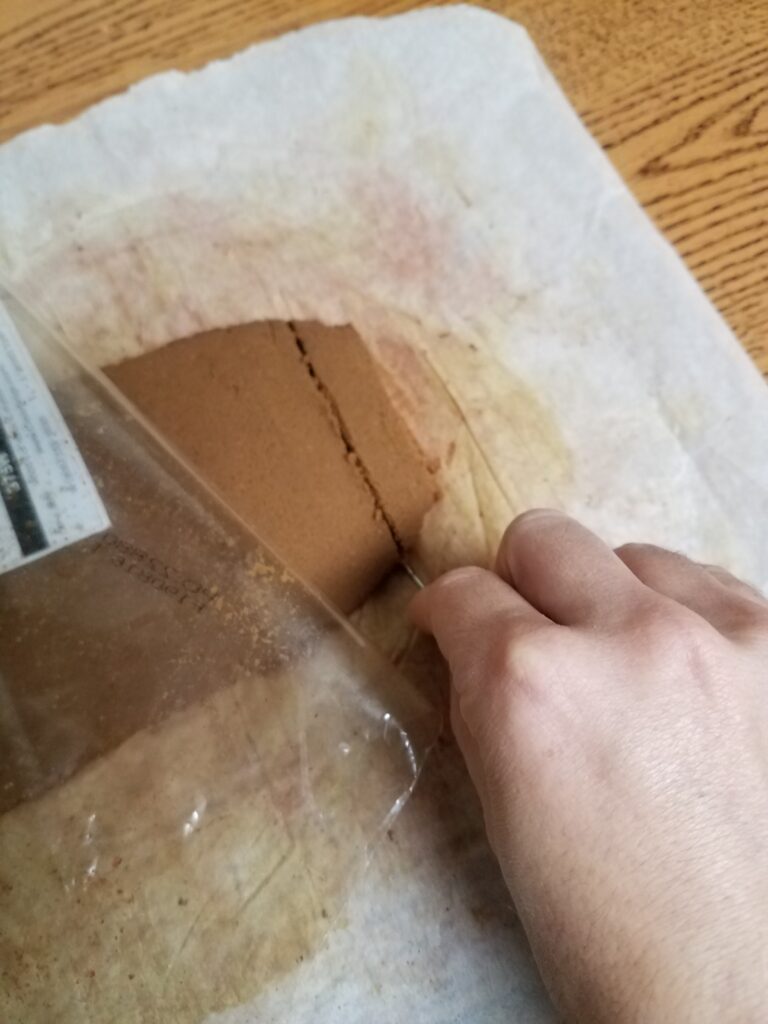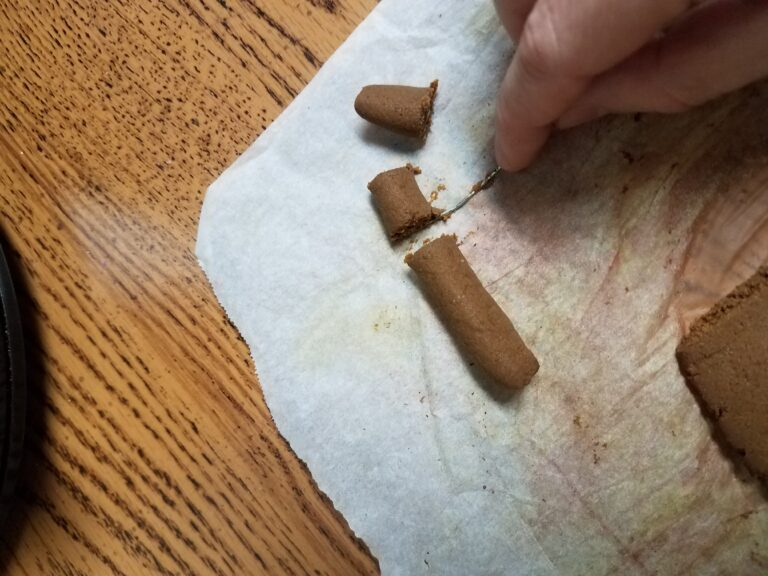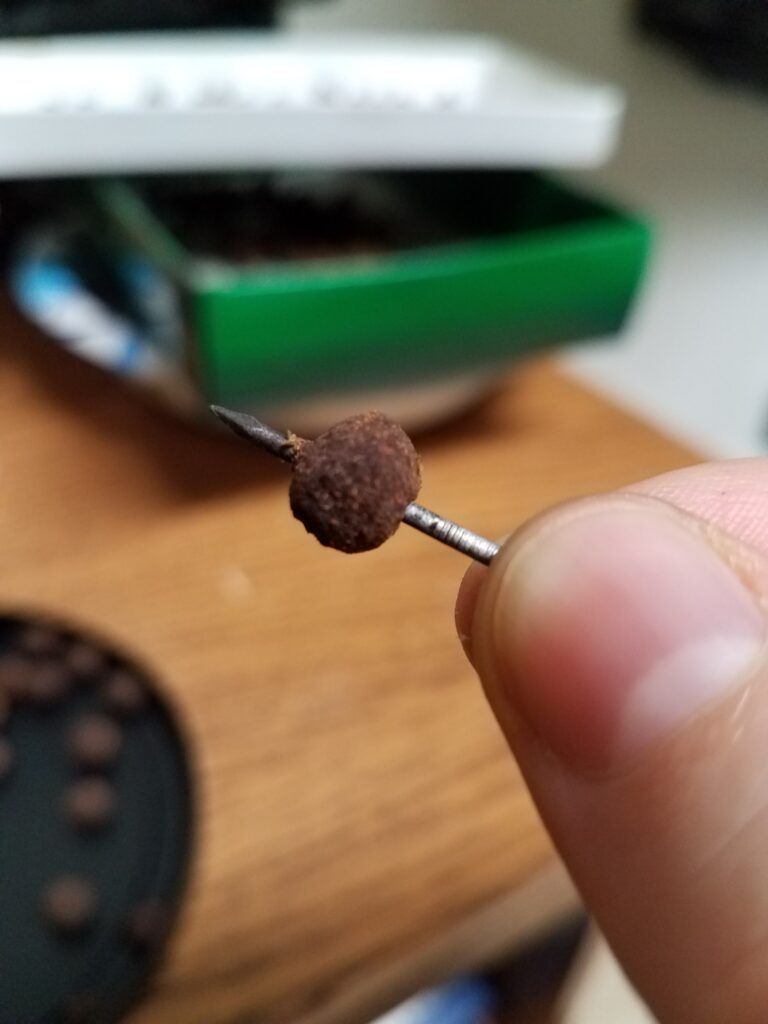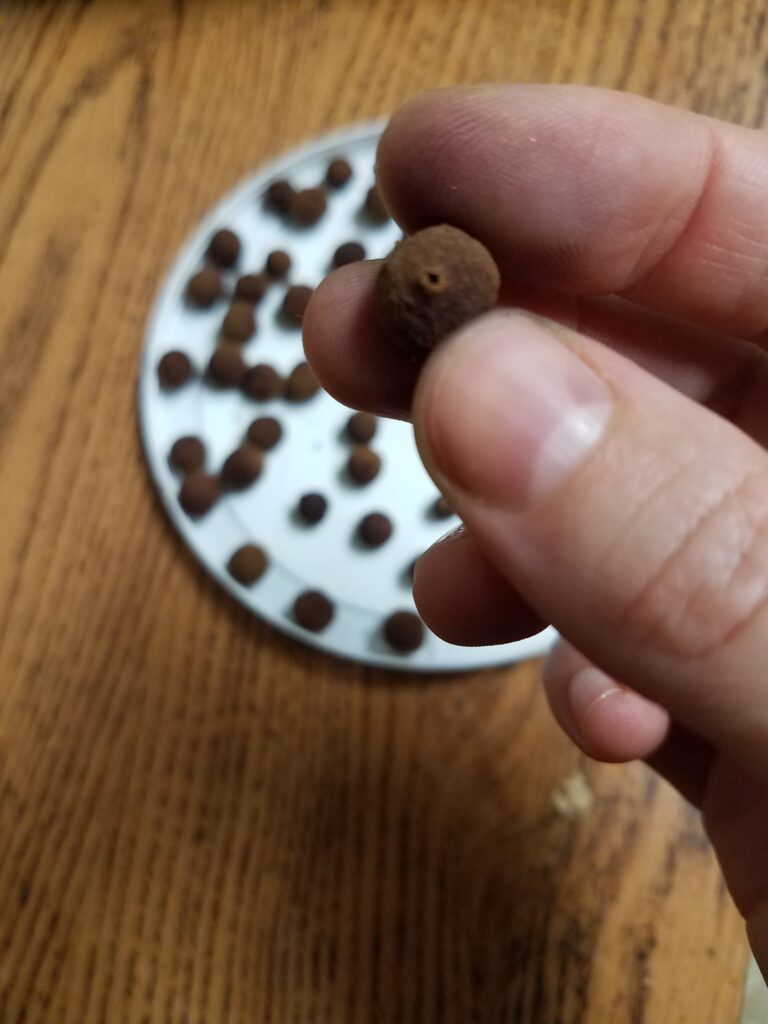Touching Heaven and Earth: From Rose to Rosary
Step 4: Making Beads
Join us in reading a guest blog series by Sr. Orianne Dyck, a Novice with the Daughters of St. Paul, as she reflects upon the process of creating Rosary beads from rose petals.
When I was in kindergarten, I learned to roll playdough between my palms to create a perfect ball. When the teacher told us that it also made the perfect cookie, we all became quite keen to master the skill. Turns out it also makes a good round rose-petal-clay rosary bead. Except…
Clay isn’t like playdough. It is more vulnerable to the conditions around it and, depending on the type of rose petals that went into it, it really can seem to have a mind of its own. I thought I knew what this part of the process would be like, and that it would be rather mindless. You just make balls and poke holes in them, right? Well, I was wrong.
The day after we left the clay out to rest a bit, I began the process of forming the beads. I removed the plastic covering from the clay, expecting it to look just like Sr. Helen’s batches usually did. But roses aren’t from a standardized factory, and my clay was reacting in its own way: a bit wet in the middle, and the edges starting to crust. But as with anything natural, this is what I had to work with. Imperfect clay.
We used the end of a paper clip to slice the clay into strips, then rolled the strips into “worms.” Slicing the “worm” into pieces, I rolled each piece into a ball, conscious that it would shrink 1/3-1/2 when it dried. The hope was for the final product to be about 5-7mm, so I gauged from that.



Most of the beads were easy enough to roll. Where I had the most trouble was when little bits that had hardened overnight snuck their way into the beads. When I tried to roll a bead that had a hardened bit in it, it would often end up with a fault line running through and refuse to stick properly. I would have to flatten out the ball and either work the dried strip into the middle, where it could cause no harm, or remove it entirely. Two beads I reshaped about 3-4 times before I got them to hold, but once I did, they were fine.
The word that came to Jeremiah from the Lord: “Come, go down to the potter’s house, and there I will let you hear my words.” So I went down to the potter’s house, and there he was working at his wheel. The vessel he was making of clay was spoiled in the potter’s hand, and he reworked it into another vessel, as seemed good to him. Then the word of the Lord came to me: Can I not do with you, O house of Israel, just as this potter has done? says the Lord. Just like the clay in the potter’s hand, so are you in my hand, O house of Israel. (Jeremiah 18:1-6)
He never settled to leave anything hard to wither or crack in me. He safeguarded the good, grew the capacity, and created something new and beautiful. And yeah, sometimes in the moment it did feel like I was getting squashed, or pulled apart, or stretched too thin. But later, I would always see how he used that process to purify and strengthen me.
This Scripture passage came to mind as I, rather frustratedly, reworked a particular bead for the 4th time and wondered if I should just give up on it. I thought about myself – how many times my hardened heart had prevented me from responding to an invitation from God or from really becoming what he desired me to be in a given moment. He didn’t just give up. He didn’t toss me aside and move on to someone else. He took me as I was and went from there. He began to rework me into something new, something good. And those troublesome, hard parts of me that were getting in the way?
A new heart I will give you, and a new spirit I will put within you; and I will remove from your body the heart of stone and give you a heart of flesh. (Ez 26:36).


He does this for each of us. Each of us are like that little bead with a crusty part in it, and each of us are in hands that can work it out – so long as we are willing to let ourselves undergo the process.
We left the beads to dry a bit over night, placing them on a porous surface to help prevent mould (if mould appears, just wipe it off – it gives up as soon as the moisture is gone from the beads). The next day, Sr. Helen brought me a nail to use to pierce the beads, creating the holes that allow the beads to be strung. It was haunting to use a nail to pierce through beads that would one day walk someone through the Mystery of the Crucifixion… and it was just another reminder to me of how God works to make us something beautiful. When we open ourselves up to the work of the Father, we do get pierced – we bear the marks of Christ (Gal 6:17) and are crucified with Christ (Gal 2:19), so that we can share in Christ’s life and resurrection, to be strung together in communion with one another and with God
As the beads continued to dry they began to shrink, and I went through to re-pierce a few whose holes were getting too narrow. This constant reworking brought forth a new prayer in me for whoever will pray with these beads one day: that they will be given the courage to be open to the working and reworking that God is willing to do in their lives to make them the truest, most beautiful version of themselves.

